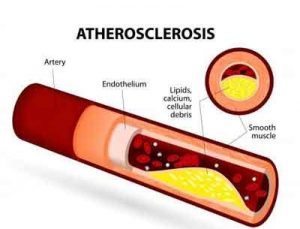- Home
- Editorial
- News
- Practice Guidelines
- Anesthesiology Guidelines
- Cancer Guidelines
- Cardiac Sciences Guidelines
- Critical Care Guidelines
- Dentistry Guidelines
- Dermatology Guidelines
- Diabetes and Endo Guidelines
- Diagnostics Guidelines
- ENT Guidelines
- Featured Practice Guidelines
- Gastroenterology Guidelines
- Geriatrics Guidelines
- Medicine Guidelines
- Nephrology Guidelines
- Neurosciences Guidelines
- Obs and Gynae Guidelines
- Ophthalmology Guidelines
- Orthopaedics Guidelines
- Paediatrics Guidelines
- Psychiatry Guidelines
- Pulmonology Guidelines
- Radiology Guidelines
- Surgery Guidelines
- Urology Guidelines
MRA reveals high atherosclerosis rate even in low risk CVD subjects

Whole-body magnetic resonance angiography (MRA) has shockingly revealed a high prevalence of atherosclerosis in people considered to be at low to intermediate risk for cardiovascular disease, according to a recent study in the journal Radiology. The study found that almost half of the study participants had at least one narrowed vessel, and more than a quarter had multiple narrowed vessels.
Atherosclerosis is a disease in which plaque builds up inside the arteries.Plaque is made up of fat, cholesterol, calcium, and other substances found in the blood. Over time, plaque hardens and narrows the arteries. This limits the flow of oxygen-rich blood to your organs and other parts of your body. It can lead to serious problems, including heart attack, stroke or even death.
The researchers were able to detect early atherosclerotic disease by whole body MRA throughout the body, that would have been missed by methods that evaluate only a single vascular territory, Through this technique, researchers were able to interpret 99.4 percent of the potentially analyzable arterial segments.
"The key advantages of this MRA technique include the 'whole-body' approach, which detects systemic disease that would be missed by modalities assessing single vascular sites," said study co-author Graeme Houston, M.D., from the University of Dundee in Dundee, Scotland. "The results offer a validated quantitative score of atherosclerotic burden, and the technique does not use ionizing radiation, which is an advantage over CT angiography."
Professor Houston and colleagues used whole-body MRA to quantify the burden and distribution of asymptomatic atherosclerosis in 1,513 people, average age 53.5 years old. The participants were considered in the low-intermediate risk group, with a 10-year cardiovascular disease risk of less than 20 percent. The researchers assessed 31 arterial segments in each participant.
The plaque burden, or overall amount of atherosclerotic plaque, and number of narrowed vessels correlated with age, blood pressure and cholesterol,all known risk factors for cardiovascular events were analysed.But the prevalence of atherosclerosis in the study group was surprisingly high.
Prof. Houston said that the result was surprising, given that the study group was made up of asymptomatic individuals without diabetes who had low to intermediate risk of future cardiovascular events by standard risk factor assessment.
The study concluded that the results confirm the feasibility for MRA as an imaging method for detecting early atherosclerotic disease in individuals at low to intermediate risk of cardiovascular events. Future plans are to conduct follow-up studies to find out links between whole-body MRA findings and long-term health outcomes.
The study was published in the journal Radiology

Disclaimer: This site is primarily intended for healthcare professionals. Any content/information on this website does not replace the advice of medical and/or health professionals and should not be construed as medical/diagnostic advice/endorsement or prescription. Use of this site is subject to our terms of use, privacy policy, advertisement policy. © 2020 Minerva Medical Treatment Pvt Ltd